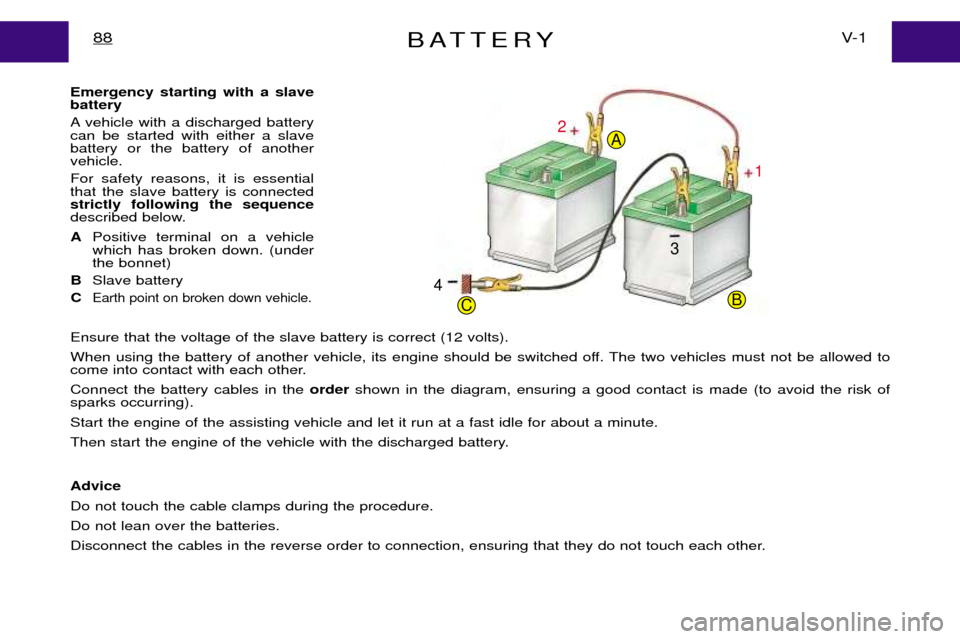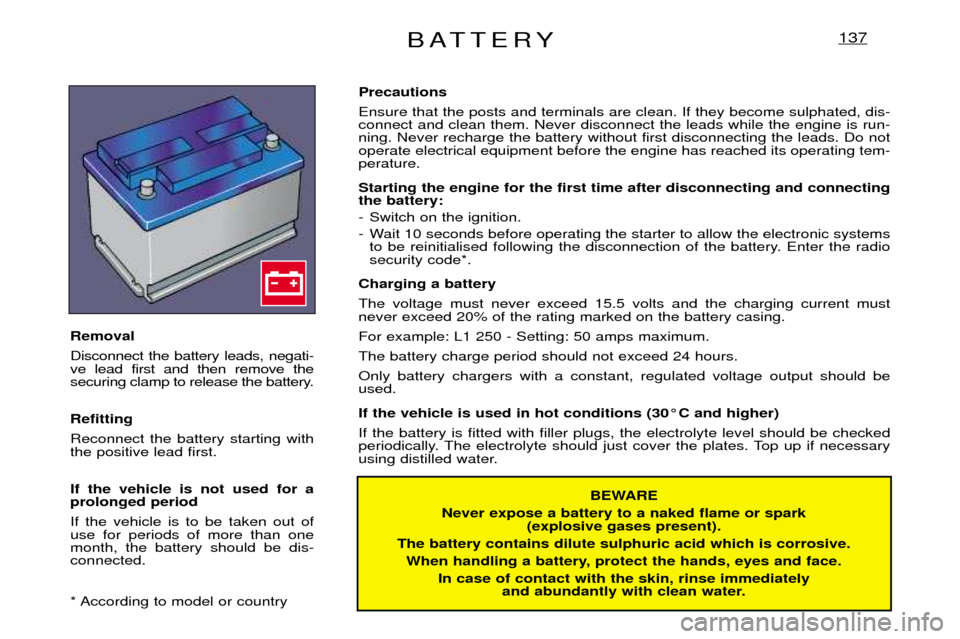Page 100 of 149

AUDIO-SYSTEM150
GENERAL FUNCTIONS On / off
With the ignition key in the ACCESSORIES or IGNITION position, press the "M"button to switch the set on
or off.The set can operate for 30 minutes without switching the ignition on. ANTI-THEFT SYSTEM
The first time you use the set following disconnection of the set or the battery, you must enter the confiden- tial code which was given to you on handover of your vehicle. Entering the code Switch the set on.The display shows "CODE"then the set changes over to code request mode and "- - - -"is displayed.
Enter your four-digitcode number using buttons "1"to "6" .
For example: if your code is 5345 press buttons "5", "3" , "4" and "5"in turn.
When the fourth number has been entered correctly, the radio starts automatically. Error in entering the code
If an error is made when entering one of the first three digits, do not continue the operation and switch off the radio to prevent blocking it. Each incorrect code entry will result in the set being blocked for a period of from 5 seconds to 30 minutes,
after the 7th incorrect entry.
To unblock the set, leave it switched on during the waiting period. When "- - - -"is displayed, you can enter
the code again.
If the set is switched off during the waiting period, this waiting period will restart when the set is switched on again. After 14 incorrect code errors the radio will be permanently blocked. ADJUSTING THE SOUND Adjusting the volume
Turn the "M"button M to increase or decrease the volume of the set.
Page 108 of 149

BATTERYV- 1
88
Emergency starting with a slave battery
A vehicle with a discharged battery can be started with either a slavebattery or the battery of anothervehicle. For safety reasons, it is essential that the slave battery is connectedstrictly following the sequence
described below.
A Positive terminal on a vehiclewhich has broken down. (underthe bonnet)
B Slave battery
C
Earth point on broken down vehicle.
Ensure that the voltage of the slave battery is correct (12 volts).
When using the battery of another vehicle, its engine should be switched off. The two vehicles must not be allowed to
come into contact with each other. Connect the battery cables in the ordershown in the diagram, ensuring a good contact is made (to avoid the risk of
sparks occurring).Start the engine of the assisting vehicle and let it run at a fast idle for about a minute.
Then start the engine of the vehicle with the discharged battery. Advice Do not touch the cable clamps during the procedure.Do not lean over the batteries.
Disconnect the cables in the reverse order to connection, ensuring that they do not touch each other.
2
1
3
4
CB
A
Page 109 of 149

BATTERY137
BEWARE
Never expose a battery to a naked flame or spark (explosive gases present).
The battery contains dilute sulphuric acid which is corrosive. When handling a battery, protect the hands, eyes and face. In case of contact with the skin, rinse immediately and abundantly with clean water.
Removal Disconnect the battery leads, negati- ve lead first and then remove the
securing clamp to release the battery. Refitting Reconnect the battery starting with the positive lead first. If the vehicle is not used for a prolonged period If the vehicle is to be taken out of use for periods of more than onemonth, the battery should be dis-connected.
* According to model or country Precautions Ensure that the posts and terminals are clean. If they become sulphated, dis- connect and clean them. Never disconnect the leads while the engine is run-ning. Never recharge the battery without first disconnecting the leads. Do notoperate electrical equipment before the engine has reached its operating tem-perature. Starting the engine for the first time after disconnecting and connecting the battery:
- Switch on the ignition.
- Wait 10 seconds before operating the starter to allow the electronic systems
to be reinitialised following the disconnection of the battery. Enter the radio security code*.
Charging a battery The voltage must never exceed 15.5 volts and the charging current must never exceed 20% of the rating marked on the battery casing. For example: L1 250 - Setting: 50 amps maximum.The battery charge period should not exceed 24 hours.Only battery chargers with a constant, regulated voltage output should be used. If the vehicle is used in hot conditions (30¡C and higher) If the battery is fitted with filler plugs, the electrolyte level should be checked
periodically. The electrolyte should just cover the plates. Top up if necessary
using distilled water.